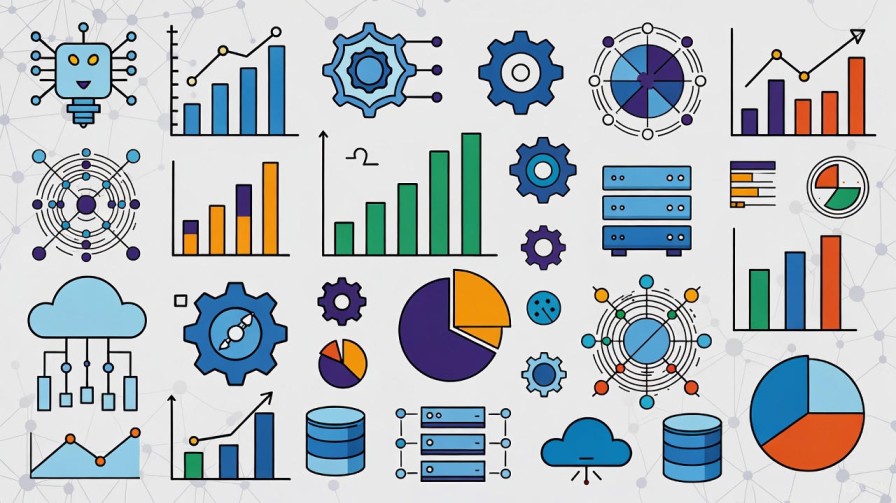Big Data Use Cases: How Analytics is Powering the Digital Economy

Big data has evolved from a buzzword to a cornerstone of modern enterprise strategy. In 2025, industries across the globe are using massive datasets and advanced analytics tools to improve efficiency, personalize experiences, and make data-driven decisions. From healthcare breakthroughs to real-time fraud detection, big data is reshaping how businesses operate.
Background / Context
The explosion of digital information—from IoT sensors to social media interactions—has created an unprecedented flow of data. According to analysts, global data generation is expected to surpass 180 zettabytes by 2025. Businesses now rely on sophisticated big data platforms to turn this raw information into meaningful intelligence that fuels innovation and competitiveness.
Big data analytics combines machine learning, artificial intelligence (AI), and cloud technologies to analyze patterns, trends, and anomalies across large datasets in real time.
Key Developments / Details
1. Healthcare: Predictive and Personalized Care
In healthcare, big data is enabling predictive diagnosis, personalized treatments, and operational efficiency. Hospitals use data from electronic health records (EHRs), wearable devices, and imaging systems to identify disease risks and optimize patient outcomes. Predictive analytics also helps manage hospital resources more effectively.
2. Finance: Fraud Detection and Risk Management
Financial institutions leverage big data for fraud detection, risk assessment, and customer analytics. By analyzing real-time transaction patterns, banks can flag anomalies instantly, preventing financial crimes. Big data also helps in credit scoring and investment portfolio management.
3. Retail: Customer Experience and Demand Forecasting
Retailers analyze consumer data to personalize recommendations, optimize inventory, and forecast demand. Big data tools help brands understand shopping behavior across channels—online, in-store, and mobile—creating seamless, customer-centric experiences.
4. Manufacturing: Predictive Maintenance and Supply Chain Optimization
Manufacturers use IoT-enabled big data systems to monitor equipment in real time, predict failures, and reduce downtime. Data analytics also streamlines supply chains, enhances logistics, and improves energy efficiency.
5. Smart Cities: Infrastructure and Traffic Management
Urban planners deploy big data for smart city initiatives—using sensors, cameras, and public data to manage traffic flow, reduce pollution, and enhance citizen safety. Data-driven insights enable cities to allocate resources efficiently and plan sustainable development.
6. Agriculture: Precision Farming
In agriculture, big data applications help farmers predict weather conditions, monitor soil health, and manage irrigation systems efficiently. Satellite data and IoT devices support smarter, more sustainable farming practices.
Technical Explanation
Big data systems rely on three key characteristics—volume, velocity, and variety—to process massive, fast-moving, and diverse datasets. Technologies such as Hadoop, Apache Spark, and cloud-native data warehouses enable scalable data processing. Machine learning algorithms uncover hidden patterns, while visualization tools make insights accessible to decision-makers.
Implications
The growing adoption of big data analytics is driving digital transformation across sectors. Businesses that harness data effectively are achieving higher efficiency, reduced costs, and improved customer engagement. On a societal level, data-driven innovation is supporting better healthcare, safer cities, and more sustainable industries.
Challenges / Limitations
Despite its potential, big data adoption comes with hurdles—data privacy, integration complexity, and talent shortages remain major challenges. Organizations must invest in secure data governance frameworks and ethical AI practices to ensure responsible use.
Future Outlook
The next phase of big data evolution will focus on real-time analytics, edge computing, and AI-driven automation. As data ecosystems mature, the convergence of big data and generative AI will unlock even deeper insights—making predictive decision-making a standard practice across all sectors.
Conclusion
Big data is no longer a futuristic concept—it’s a practical, transformative tool that’s redefining business intelligence. Whether improving patient care, preventing fraud, or optimizing logistics, big data’s real-world applications continue to expand, proving that the power of information truly drives the digital age.